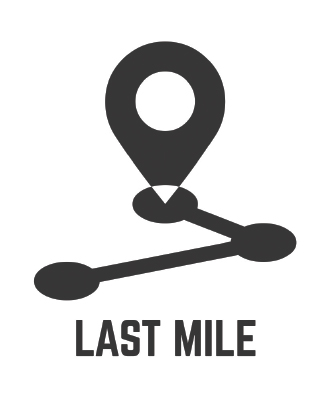Last mile delivery has emerged as the pivotal battleground where convenience collides with congestion. The global market for last mile delivery is poised for unprecedented growth expected to reach US$137.4 billion by 2030, as consumers continue to transform the way we live, shop, and move.

THE CONCRETE JUNGLE
The impact of last mile delivery is evident in densely populated areas, like New York’s Manhattan. In this concrete jungle, last mile delivery has witnessed a 55 percent increase in the number of stops on delivery routes, and a 46 percent rise in the number of vehicles making deliveries. It’s no wonder that over 2.4 million packages are delivered in Manhattan every weekday.
New Yorkers have been increasing their daily household deliveries at an astonishing rate since 2009. Deliveries tripled to more than 1.1 million by 2017 and reached 1.5 million by 2019. The following four years saw the daily number grow by a staggering 60 percent.
Chicago, Phoenix, and Houston are also grappling with the last mile delivery boom.
- Chicago witnessed a 116 percent surge in the number of stops, and 82 percent increase in the number of vehicles dedicated to last mile deliveries.
- Phoenix recorded 58 percent growth in the number of stops, along with a 22 percent rise in the number of last mile delivery vehicles.
- Houston had a notable 29 percent rise in stops along last mile delivery routes, coupled with a 39 percent increase in the number of fleet vehicles responsible for deliveries.
Convenience, speed, and personalization are the driving forces behind consumer purchasing behavior. If business continues as usual, emissions from delivery traffic in the world’s 100 largest cities will surge by a daunting 32 percent by 2030. Traffic congestion is predicted to increase by more than 21 percent, adding to the already frustrating urban gridlock. It’s time for a solution, which comes in the form of curbside management.
CLEARING ROADBLOCKS
Curbside management is poised to clear future roadblocks created by last mile delivery. The Geotab ITS platform, Altitude, connects aggregate commercial vehicle insights to offer a contextualized view of an entire transportation network. It harnesses the power of data intelligence and trusted artificial intelligence to play a crucial role in route optimization and near real-time monitoring of traffic insights, ensuring safe, reliable deliveries even amid congested city streets.
IMPROVING EFFICIENCY
Curbside space is in high demand. Urban planners and cities are analyzing its use to build more efficient infrastructure and reduce congestion– like creating overnight loading zones or paid or priority curb spaces. Geotab ITS’ Stop Analytics module fuels curbside programs with insights from commercial vehicle activity, to understand why, where, and how curbside space is used.
As businesses strive to meet the growing demands of consumers, innovative solutions based on data intelligence will pave the road to alleviate the environmental and logistical challenges ahead.
ABOUT THE AUTHOR
Nate Veeh is the senior business development manager, intelligent transportation systems, at Geotab. To learn more, visit its.geotab.com.




